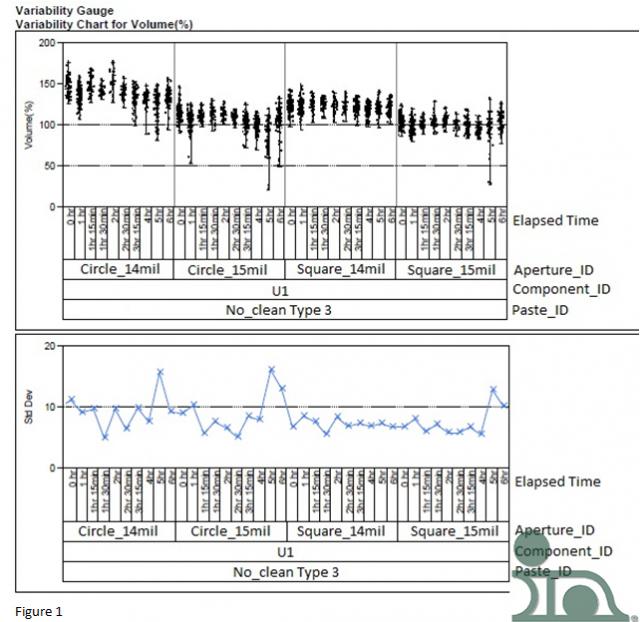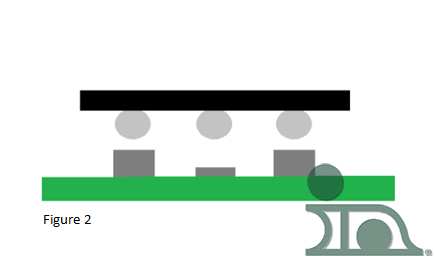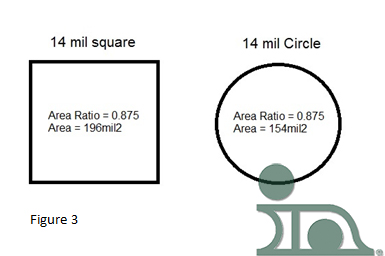In our continued investigation and quest to improve solder paste printing for fine-feature paste deposits, we also found that consistency (low standard deviation) favored the square apertures when comparing circular apertures to square apertures with radius corners (hereafter referred to only as square apertures).
Figure 1 depicts results found through several studies: square apertures with radius corners provide more consistent deposits, pad to pad. In an earlier discussion, we stated that consistency very well may outweigh average volume.
The upper graph in Figure 1 compares the transfer efficiency of 14 and 15 mil circles on the left half and 14 and 15 mil squares on the right half. The material used was a Type 3 no-clean solder paste and a 4mil-thick stencil.
The lower graph shows the standard deviation. Note that the 14 and 15 mil squares provide a controlled (<10% standard deviation) and consistent (little fluctuation) process compared to the respective circular apertures.
Figure 2 illustrates a possible open on the center sphere due to inconsistent paste deposits, pad to pad, and reinforces our statement that pad-to-pad consistency is vital to success.
The improved transfer efficiency makes sense when we consider that, for the same area ratio, a square aperture has a greater surface area and deposits a greater volume of solder paste.
The area ratio for a circle and square simplifies to D/4t, where D equals the diameter of the circle or one side of a square, and t equals the stencil thickness:
Area ratio = D/4t
= 14mil/4(4mil)
= 0.875 for both the square and circle
However, when looking at the overall volume, the square aperture deposits a greater volume of paste:
Volume square = L x W x H Volume circle = πr2h
= 14mil x 14mil x 4mil = 3.14(72)4
= 784mil3 = 616mil3
The square aperture has the potential of depositing 21% more solder paste than the circular aperture, providing more opportunity for success.
The other important note to consider is that the square has a larger surface area (see Figure 3). The square provides 196mil2 whereas the circle only provides 154mil2 (again ~21% gain for the square aperture on the surface area). This is critical in fine-feature stencil printing because the surface area of the pad creates a surface for the solder paste to adhere to. The adhesion of the paste to the PCB pad helps the paste deposit pull from the stencil, post print, as the PCB is lowered from the stencil in the printing process. A 21% increase in surface area is substantial in successfully printing for fine-feature components.
As with anything, there is a balance. So, before changing all your aperture designs to square apertures with radius corners, keep in mind that it can provide too much paste and cause issues with bridging/shorts.
Next up: printing for success: solder mask-defined pads vs. copper-defined





